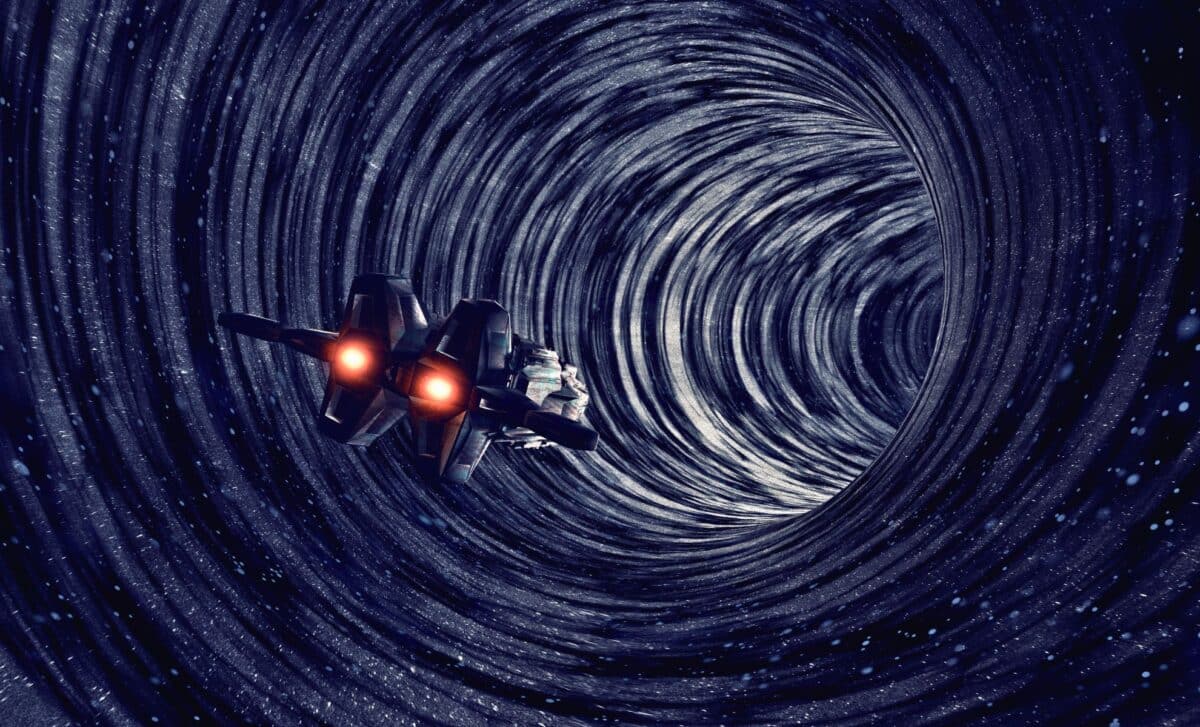
Arezki Amiri Published on December 24, 2024
Collected at: https://dailygalaxy.com/2024/12/scientists-say-they-might-have-discovered-a-portal-to-the-fifth-dimension/
Physicists have proposed an innovative theory linking dark matter to a hypothetical fifth dimension, suggesting a groundbreaking solution to one of the most enduring mysteries of the cosmos. Their research, conducted by scientists from Spain’s Autonomous University of Madrid and Germany’s Johannes Gutenberg University Mainz, was published in The European Physical Journal C. The study introduces a cohesive framework connecting dark matter with the warped extra dimension (WED) model, a concept first introduced in 1999.
Understanding the Role of Dark Matter
Dark matter is essential to our understanding of the universe, as it constitutes approximately 27% of the total mass-energy density of the cosmos. While its presence is inferred through gravitational effects on visible matter and cosmic structures, dark matter remains undetectable through direct observation or traditional particle physics experiments.
Without dark matter, cosmic features like galaxies and galaxy clusters would not hold together under their own gravitational pull. Its unique ability to affect gravity without interacting with electromagnetic forces suggests it operates under laws distinct from those governing ordinary matter.
The Fifth Dimension and Dark Matter
The WED model posits the existence of an additional spatial dimension that is “warped” in its geometry. Building on this concept, the research team explored how fermions, fundamental particles that constitute matter (such as electrons, quarks, and neutrinos), might interact with this extra dimension.
The scientists propose that fermions could enter the fifth dimension through quantum portals, resulting in the formation of dark matter relics. These relics might exist as fermionic dark matter, a potential solution to the mystery of unseen matter in the universe.
Key insights from the study include:
- Mechanism: Fermions interacting with the fifth dimension generate “bulk masses” in the warped space, potentially explaining the massive presence of dark matter.
- Dark Sector: The fifth dimension acts as a hidden realm, harboring dark matter that cannot be detected using standard model physics but influences observable phenomena through gravity.
This novel framework provides a unified explanation for the presence of dark matter while addressing unresolved questions in particle physics, such as the hierarchy problem—why the Higgs boson’s mass is significantly lighter than expected.
Challenges in Verification
Despite the elegance of the theory, observational proof remains elusive. Currently, gravitational wave detectors, such as the Laser Interferometer Gravitational-Wave Observatory (LIGO) in the United States and the Virgo interferometer in Italy, represent the most promising tools for validating this model.
Gravitational wave detectors could potentially identify disruptions or patterns indicative of fermionic dark matter within the fifth dimension. The growing network of global facilities increases the likelihood of capturing these elusive signals.
Tools for Dark Matter Exploration
| Instrument | Location | Purpose |
|---|---|---|
| LIGO | Hanford and Livingston, USA | Detect gravitational waves; could capture fifth-dimensional disruptions. |
| Virgo | Cascina, Italy | Complements LIGO in gravitational wave detection for broader sensitivity. |
A New Frontier in Physics
By linking dark matter with the warped extra dimension model, this research not only advances cosmology, but also highlights gaps in our understanding of physics. The implications extend beyond dark matter, potentially offering solutions to broader problems in theoretical physics.
As quoted from the study, “We know that there is no viable [dark matter] candidate in the [standard model of physics], so already this fact asks for the presence of new physics.” This sentiment underscores the necessity of expanding our theoretical frameworks and experimental techniques to probe the unknown.
The study was published in The European Physical Journal C.

Leave a Reply